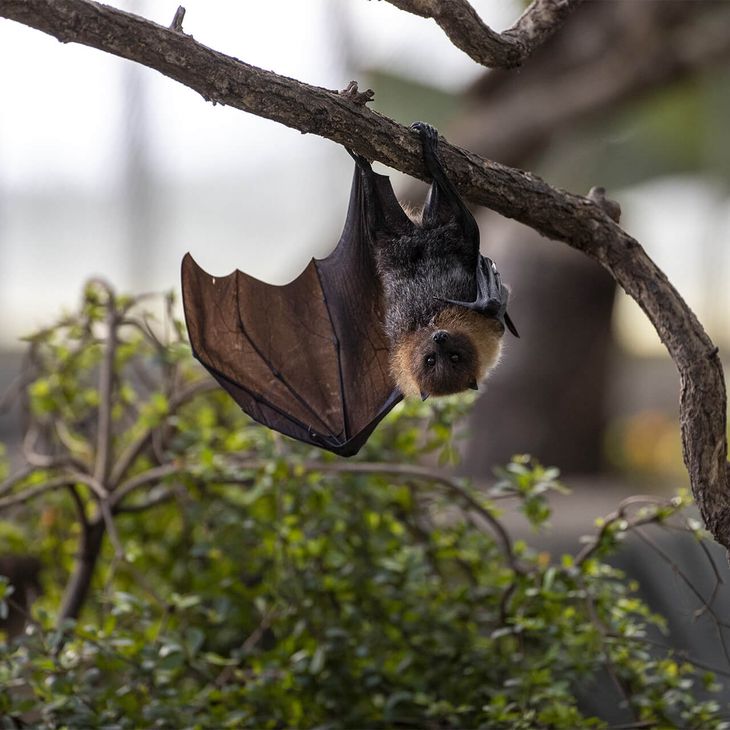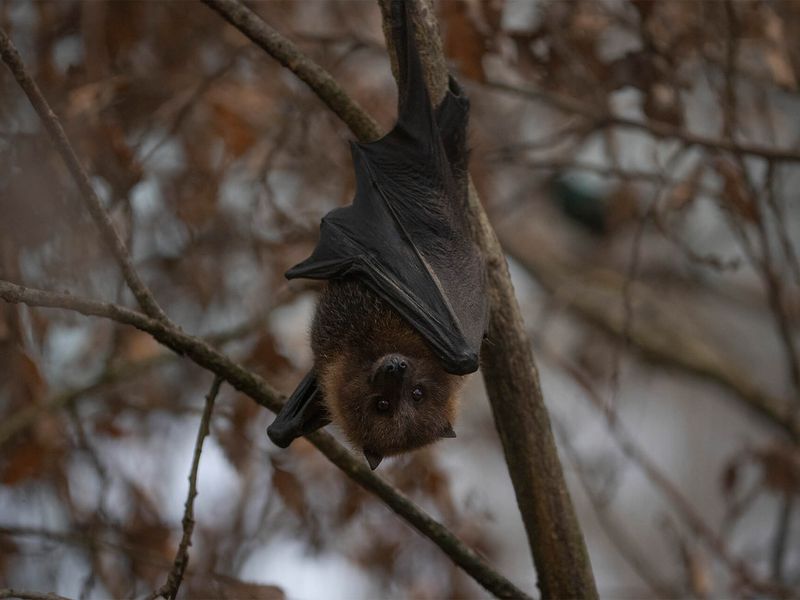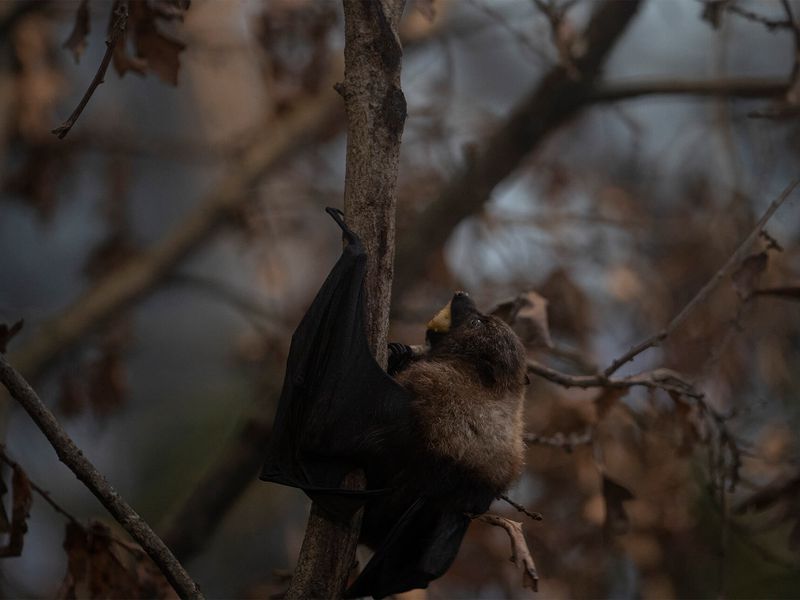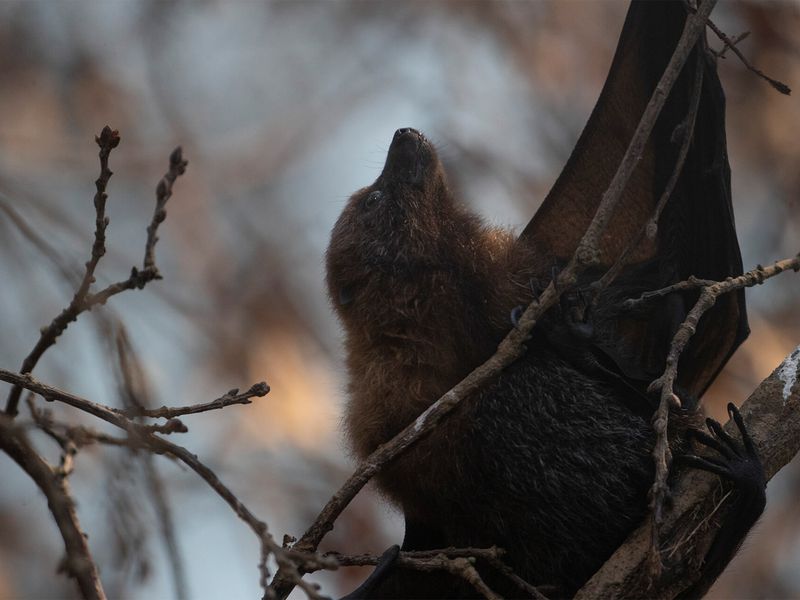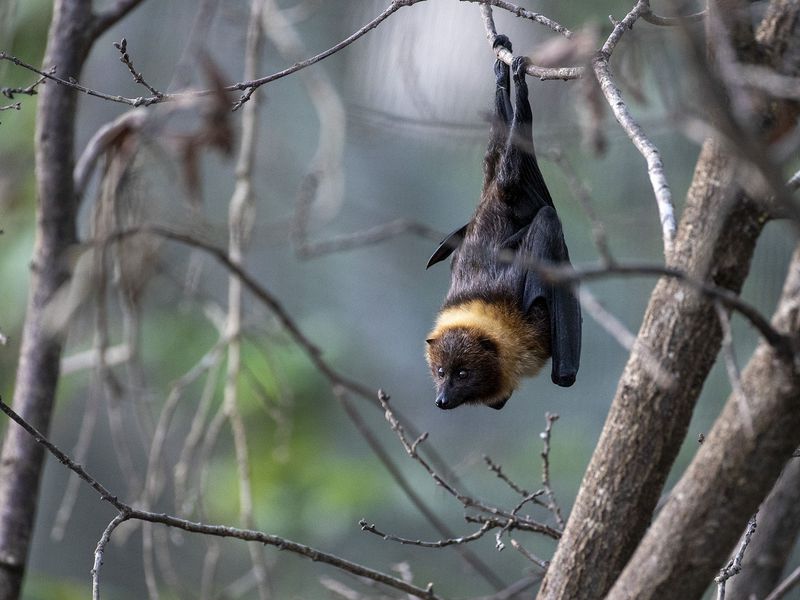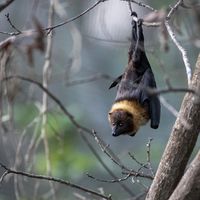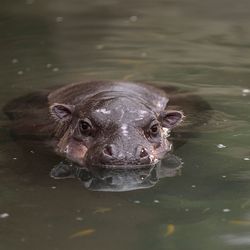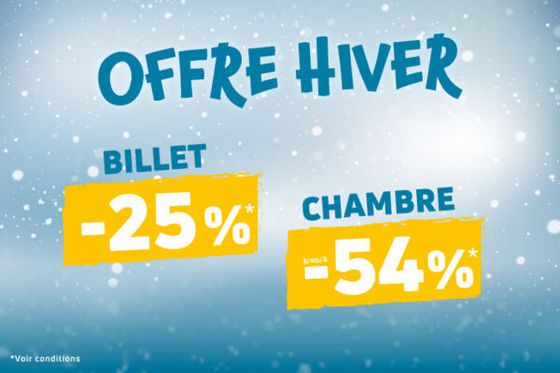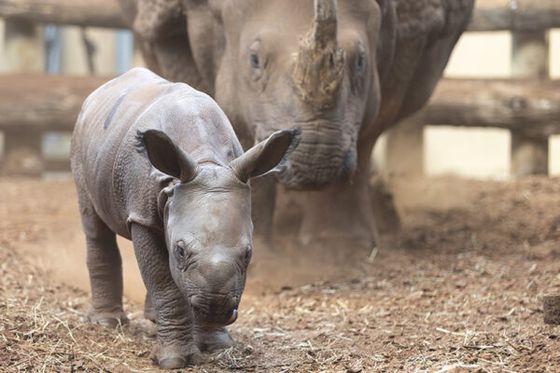« The Rodrigues flying fox is also called the “golden bat” or “Rodrigues fruit bat” »
Rodrigues flying fox
One pretty big bat
The Rodrigues flying fox is also called the “golden bat” or “Rodrigues fruit bat”. Belonging to the “megabat” family, this flying mammal reaches a fairly substantial size and wingspan: its body measures 15 to 20 cm with a wingspan of 50 to 90 cm. It generally weighs between 300 and 350 grams.
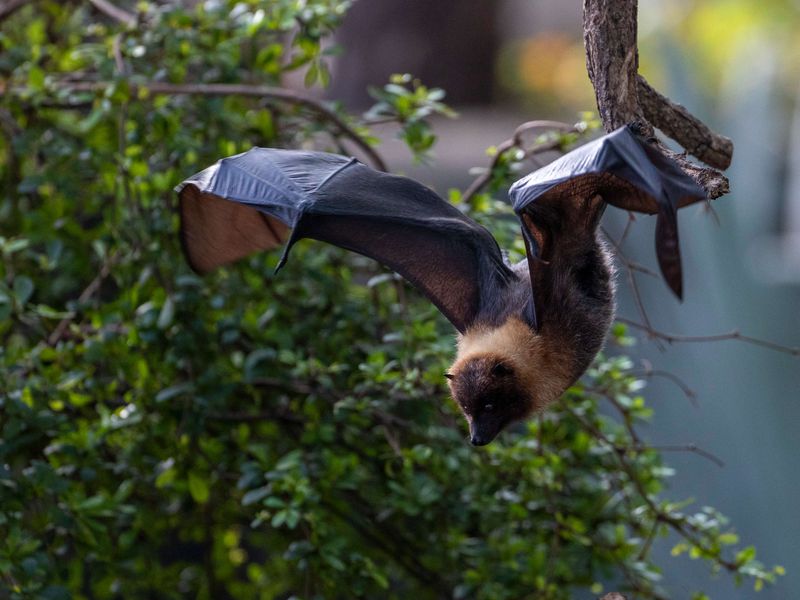
Did you know?
Arrival of the Rodrigues flying foxes
Bats from Rodrigues are coming
Relive the arrival of this brand-new species, a surprising animal that is still little-known to the general public, at the equatorial dome.
The “Sauve-Chiro” project
The Beauval Nature association supports the Comité Départemental de la Protection de la Nature et de l’Environnement’s “Sauve-Chiro” project to improve knowledge about bats, and to gradually rehabilitate bat species in France, especially in the Centre - Val de Loire region. In 2019 this programme came in 1st place for the jury’s award in the “Conservation” category.
The program received the 1st prize from the 2019 jury of the Beauval Nature awards, “Conservation” category.

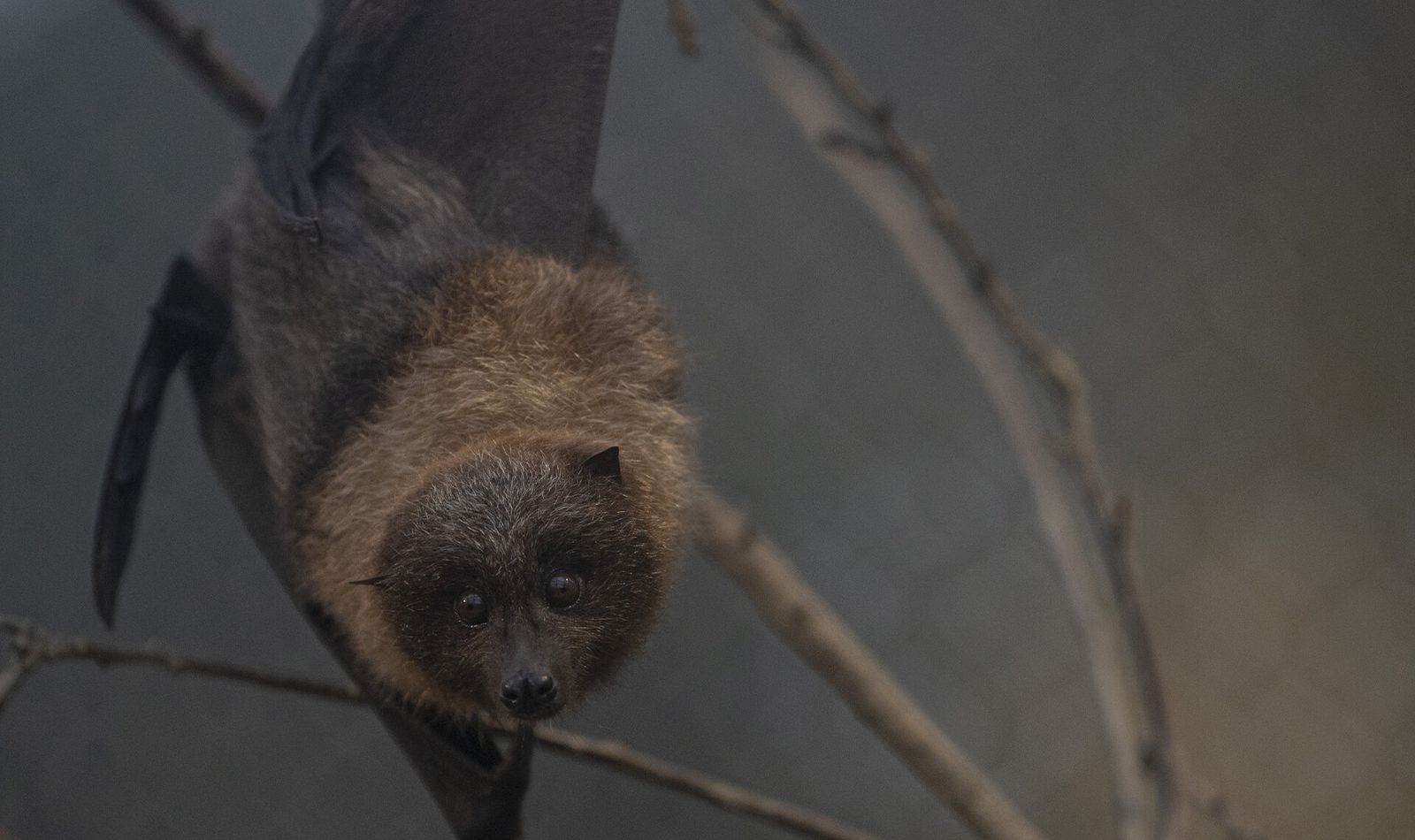

Sponsor our Rodrigues flying foxes
Establish a strong bond with your favourite species whilst supporting conservation programmes through the Beauval Nature association!
Endangered
Learn more about the species
-
FrugivoreDiet
-
4 to 6 monthsGestation period
-
1 youngLitter size
-
Tropical forestsHabitat
A frugivore that disseminates seeds
A flying pup
A skeleton made for flying

Take full advantage of the experience thanks to our mobile application!
Find out more

